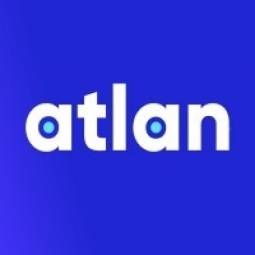Technology Category
- Analytics & Modeling - Data Mining
Applicable Industries
- Cement
Use Cases
- Immersive Analytics
- Time Sensitive Networking
Services
- System Integration
About The Customer
Postman is a leading API platform with hundreds of team members distributed across four continents. The platform is used by more than 17 million users from 500,000 companies. The company's data team scaled nearly fivefold in one year, leading to challenges in managing and understanding the data. Postman's goal is to democratize data, making it accessible and understandable to everyone in the company. This became especially important in 2020 when the company continued to scale while going fully remote during the COVID-19 pandemic.
The Challenge
When Postman's data team expanded, they faced a significant challenge in managing and understanding their data. The data was scattered across different locations, and often, the same data in different places contradicted each other. As the company grew, the data system, which was initially simple and manageable, became complex and difficult to navigate. The data was stored in tables, and the information about these tables was only known to the early members of the data team. This system was not scalable and could not keep up with the company's exponential growth. The company's goal was to democratize data, making it accessible and understandable to everyone in the company. However, the lack of consistency and context around the data made it difficult for everyone to understand and trust the data. The data team was constantly bombarded with questions about data location and usage, and the loss of any team member would mean the loss of crucial data knowledge.
The Solution
Postman's data team decided to take on the data system as a project, aiming to make the data easier to access and understand. They started by creating a Confluence document to store all data questions and answers that were previously stored in Slack. This document served as a single, searchable source of truth. However, as the company continued to grow, a single document was not scalable. The team then created a data dictionary in Google Sheets, where all table, schema, and column names were documented. However, this solution also faced challenges in terms of quality and scalability. Finally, the team implemented Atlan, a modern data workspace, which allowed them to catalog and document all their data. Atlan provided multiple levels of permissions for different types of users, enabling everyone to search for and access data without having to contact the data team. This solution ensured consistency across the board and helped rebuild trust in the data.
Operational Impact
Quantitative Benefit

Case Study missing?
Start adding your own!
Register with your work email and create a new case study profile for your business.
Related Case Studies.

Case Study
System 800xA at Indian Cement Plants
Chettinad Cement recognized that further efficiencies could be achieved in its cement manufacturing process. It looked to investing in comprehensive operational and control technologies to manage and derive productivity and energy efficiency gains from the assets on Line 2, their second plant in India.

Case Study
Digital Transformation of Atlanta Grout & Tile: An IoT Case Study
Atlanta Grout & Tile, a Tile, Stone & Grout restoration company based in Woodstock, Georgia, was facing challenges with its traditional business model. Despite steady growth over the years, the company was falling behind the web revolution and missing out on the opportunity to tap into a new consumer base. They were using independent software from different vendors for each of their department information and workforce management. This resulted in a lot of manual work on excel and the need to export/import data between different systems. This not only increased overhead costs but also slowed down their response to clients. The company also had to prepare numerous reports manually and lacked access to customer trends for effective business decision-making.

Case Study
Revolutionizing Construction Equipment Rental: A Case Study on ProsRent and ENO8
ProsRent, a startup that won the 'Best Financial Opportunity' and 'Best Pitch' at CodeLaunch 2016, aimed to revolutionize the way construction professionals source and rent heavy equipment. In the construction industry, project managers and contractors typically rent heavy equipment from supply companies. However, predicting inventory can be challenging, and finding the required equipment at the right time and place can be a hassle. If the preferred vendor doesn't have the required equipment, it results in wasted time and money in searching for it, often leading to higher costs due to non-preferred rates and increased delivery costs if the vendor is located far from the job site. Suppliers, on the other hand, desired access to a wider base of trusted renters that they didn't have to vet themselves and wanted to offer dynamic rental pricing based on demand and availability in their market. ProsRent's challenge was to produce a minimum viable product that was fast and first to market but also strong enough to engender loyalty and repeat business from the target market.

Case Study
AI-based Automation for Commercial Office HVAC: A Verdigris Case Study
Modern buildings are required to run longer hours, support a variety of end uses, and contribute to higher levels of economic productivity, leaving a thin margin for error. However, even the most advanced building and environmental control systems have failed to adequately support facilities and operations management. Buildings are often inefficient and the people using them are underserved. To meet occupant comfort and maintain cost and energy efficiency, a dynamic, AI-assisted approach is needed.

Case Study
Revamping EE's Legacy ERP: A Case Study on BT's Strategic Transformation
EE, even after its merger with BT, was operating its ERP estate on legacy infrastructure, hosted on the premises of a third-party supplier. This outdated system resulted in a volume-based operational model, higher time to market, longer delivery cycles, and unsatisfactory customer experience. BT recognized the need for a strategic transformation of these aging ERP systems and sought a partner who could proactively manage application services. The partner was also expected to handle development requirements associated with application management services, drive accountability, and ownership with a time and target-driven transformation of these services. BT's primary goals were to improve customer experience, reduce cycle time, and measure these improvements with precision.








